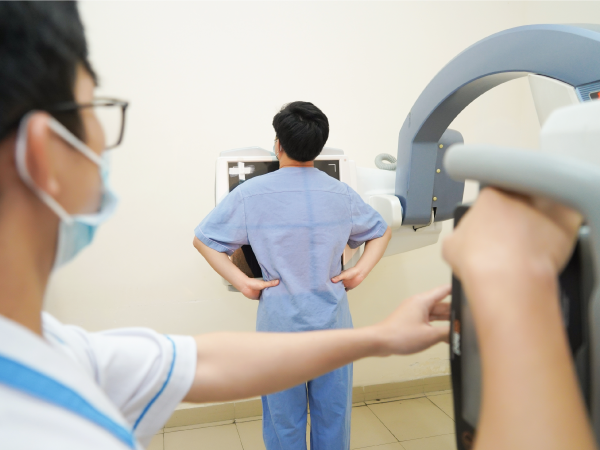Radiology Department
INTRODUCTION
Diagnostic imaging plays a crucial role in enabling early detection and helping doctors make accurate diagnoses.

INTRODUCTION
The Department of Diagnostic Imaging at Tam Tri Sai Gon General Hospital has been continuously developing its professional activities in diagnosis and treatment. Fully equipped with modern technology and staffed by highly qualified, professional, dedicated, and enthusiastic personnel, the department meets the healthcare needs of the community.
ORGANIZATION
-
Head of Department: Dr. Vu Van Nam, Specialist Level I
-
Doctors:
+ Dr. Nguyen Quoc Vinh, Specialist Level I
+ Dr. Tran Thi Ngoc Hien -
Chief Technician: Le Trong Duyet
-
Diagnostic Imaging Staff:
+ Vo Thanh Trieu
+ Nguyen Huu Phung
+ Dang Thanh Tuan
DUTIES AND FUNCTIONS
The Department of Diagnostic Imaging (Radiology) plays a vital role in diagnosing diseases and supporting the treatment process. Below are some of the main duties and functions of the department:
-
Disease Diagnosis:
One of the most important tasks is using imaging techniques such as X-ray, ultrasound, MRI (Magnetic Resonance Imaging), and CT (Computed Tomography) to diagnose diseases. Physicians analyze these images to detect signs of illness and provide diagnostic conclusions. -
Support in Treatment:
By providing diagnostic imaging information about a patient's condition, the department assists doctors in deciding the most appropriate treatment methods. -
Surgical Planning:
In some cases, diagnostic images are used to assist in planning surgeries, helping surgeons gain a clear understanding of the structure and location of diseases. -
Disease Screening:
The department also conducts screening procedures to detect early signs of diseases, allowing for diagnosis before symptoms become apparent. -
Assessment of Disease Progression:
Monitoring diagnostic images over time helps determine disease progression and evaluate treatment effectiveness. -
Research and Development:
The department actively participates in research and development of new medical imaging technologies to improve diagnosis and treatment.
These duties and functions are crucial in providing diagnostic information and supporting patient care and treatment.
SERVICES
-
Multi-slice Computed Tomography (CT Scanner) of the brain, chest, abdomen, and lungs.
-
Digital X-ray imaging: chest, bones, abdomen, stomach, colon, intravenous urography (IVU), Kehr drainage imaging, gastrointestinal fistula imaging.
-
Vascular ultrasound.
-
Echocardiography (heart ultrasound).
-
4D color ultrasound for early detection and monitoring of fetal abnormalities during pregnancy.
-
Color ultrasound for diagnosing soft tissue diseases, abdominal conditions, and subcutaneous glands.
-
Breast and thyroid ultrasound.
-
Vaginal probe ultrasound to monitor and manage reproductive health.
FACILITIES
-
Medical Film Processor
-
General X-ray Machine
-
Ultrasound Machines
-
X-ray Viewer (400x500 cm)
-
CT Scanner
-
Mammography Machine
The Department of Diagnostic Imaging is continuously improving its services to support other specialties in providing comprehensive healthcare for patients.

 Vietnamese
Vietnamese English
English




